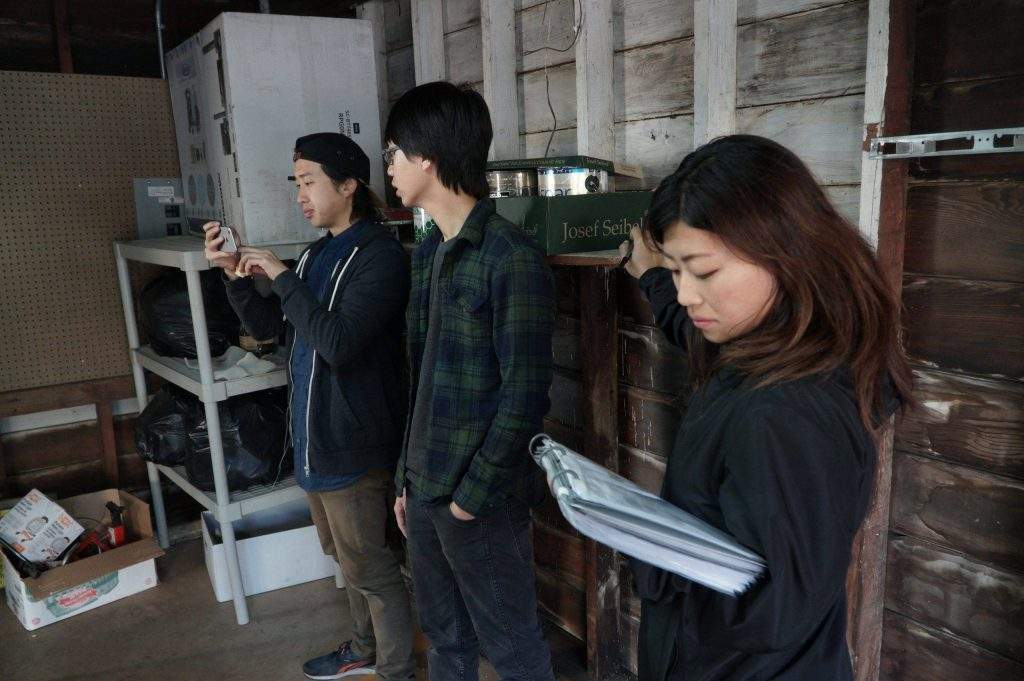
There are many important professional relationships in filmmaking but perhaps none more essential than that of director, cinematographer, and producer. These three positions collaborate from the inception of a production until it’s final form to manifest its message and personality. Working congruently, sometimes with a sense of unease, they fashion the most appealing aspects of the stories which have become so beloved throughout the history of this artform.
When director Yung-Jae Chen aspired to create a Sci-Fi film set in San Francisco, the theme and setting indicated the level of financing of most Hollywood blockbusters, while his budget did not. Encouraged by his DP Vuong Tran to enlist producer Nanako Fukui in hopes of a miracle to materialize RUNNER, Chen was encouraged to hear Fukui’s take on actually making his vision a reality.
While the film stars Ashley Ying in the lead role of Kay as well as Amanda Misa Curtis (of Image Award nominated TV Series Lethal Weapon) with Johnny Gilligan and Cat Shimizu as Kay’s sick parents, the city of San Francisco itself is a prominent character in this story which owes so much of its success to the producing mastery of Nanako Fukui.
Initial Conversations
From the initial conversations, writer/director Yung-Jae Chen related to Nanakothat he wanted to make a film which rebuked dialogue for a more visual based approach. Having read Haruki Murakami’s What I Talk About When I Talk About Running: A Memoir, led the director to become a runner in his home of San Francisco and instilled within him a deep love for the sights of this city.
Through the first-hand perspective of a runner, he wanted to tell a story about the spoken and unspoken motivations that move us forward and shapethe personal stories we tell ourselves, defining our purpose individually and collectively. With that in mind, one might not suspect that RUNNER is a zombie film, which is exactly the kind of unforeseen response the story wants to cultivate.
Introduction
We are introduced to the film’s main character Kay as she watches a VHS tape of a little girl riding her bike, going to her first day of school, etc. Kay watches this same tape every day as part of her routine, a routine that also includes a daily run through San Francisco. It’s a San Francisco like we’ve never seen before, void of people, cars, or any human activity. Her running route leads to the beach where a single pole is implanted in the sand.
The only break for Kay in this repetition is her interaction with animals, ranging from a dog she adopts to a rabbit she traps in the park and eats. This monotony ends when Kay peers through her bedroom window one day and notices the light on top of the beach pole blinking. This is the moment in which RUNNER transforms itself into a survivalist zombie tale with Kay on a mission to save humanity. Along the way, we learn the secret of the little girl in the video and discover the truth about what happened to Kay’s parents.
Remarkable things about film
There’s something remarkable that happens when you watch this film and at some point think to yourself, “I haven’t heard anyone speaking for quite some time.” Losing yourself in the scenery and visuals of the story establishes a connection with Kay and the solitary lifestyle she lives, though the reasons are not revealed until well into the film. To achieve this, the story had to rely on the aesthetic personality of San Francisco. It’s a producer’s job to acquire what is needed within budget. RUNNER required a fair amount of creative thinking on Nanako’s part.
She explains, “Baker Beach is one of the most iconic San Francisco landmarks.The reason for choosing this location was that Golden Gate Bridge is in the background. It also comes with a $20,000 price tag for shooting there. By substituting a different beach in the Pacifica and then adding the Golden Gate Bridge in post, we achieved our shot and were able to use these funds elsewhere for the production. The shots that took place in a deserted Financial District were done at off-peak hours and through constant monitoring of any traffic, pedestrian or vehicle.”
Recreation of Kay’s 1990’s home
One highly impressive element of the look of this film is the accurate recreation of Kay’s 1990’s home. Nanako worked extensively with the film’s production designer to acquire the household items in time for the shoot. The memory of ceaseless working hours fades away when a film is received as warmly as RUNNER. This story of a strong female protagonist in a retro-apocalyptic time was an Official Selection of the Boston SciFi Film Fest, Imagine film Festival, Portland Film Festival, and numerous others.
Nanako recalls feeling particularly satisfied while attending a Q&A for RUNNER at CAAM Fest (formerly San Francisco Int’l Asian Film Festival) as one attendee stated that the lack of dialogue seized her attention and focused her more intently on the question of why Kay was undertaking these daily activities. At a time when it seems our attention is pulled numerous way by technologies advancements, RUNNER has found a way to demand a singular focus from its audience by speaking as little as possible.